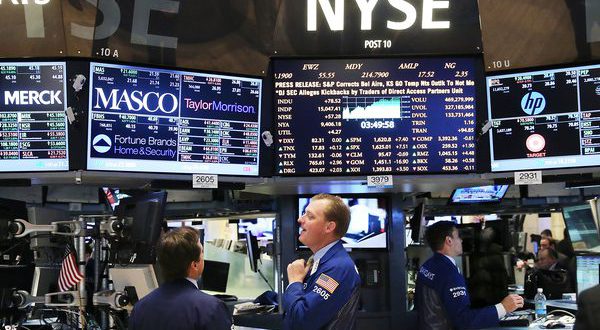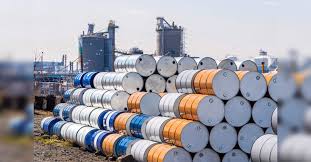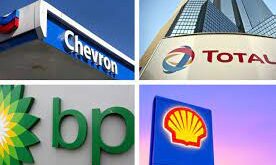An attack on Libya’s state-run National Oil Corp has triggered a midday rally in oil. giving a lift to energy-related stocks.
Want to know why the Dow Jones Industrial Average is doing what it’s doing? Check back here for a semi-live look at the volatile markets from Barron’s reporters.
West Texas Intermediate light. sweet crude for October delivery is up 2.8% to $69.46 a barrel on the New York Mercantile Exchange. Brent crude. the global benchmark. rose 2.2% to $79.06 a barrel.
Energy companies have been the best performers among S&.P 500 stocks on Tuesday. The Energy Select Sector SPDR ETF (XLE) gained 1.5%.
The price of oil got a lift earlier this year as investors worried that U.S. sanctions on Iran could result in a decline in global exports of crude. The price of Brent temporarily breached $80 a barrel in May. but the market has been held in check since late June. when the OPEC countries. led by Saudi Arabia. decided to ramp up production to maintain oil-market stability.
Libyan crude has been seen as an additional alternative to Iranian supplies. Although the country’s oil production has been stabilizing lately. the latest episode followed a series of attacks earlier this year. raising concerns about Libya’s ability to pump oil. and the total amount available on the market.
To understand why auto tariffs are such a contentious issue today. it helps to go back to the 1970s—with U.S. carmakers dominating the country’s auto market. Japan’s export growth on the horizon. and impending conflict in the Middle East. Photo: AP
Brent’s rise to above $79 puts it within range of the $80 threshold once more. Some analysts have seen this coming. As my colleague Crystal Kim reported in July. Goldman Sachs’ analyst Damien Courvalin predicted that Brent could touch the $80s again this fall. “Ultimately. global inventories are low. oil demand remains robust and we still expect a deficit once U.S. secondary sanctions are reintroduced.“ wrote Courvalin in a note that time.
The market had a mixed performance on Tuesday. Stocks keep crossing the break-even line as investors wonder whether the market will close in positive territory following Monday’s gain. The S&.P 500’s four-day losing streak last week had awakened concerns about the market running into resistance.
The S&.P 500 rose 4.53 points. or 0.2%. to 2881.66. while the Dow Jones Industrial Average ticked 0.2% higher and the Nasdaq Composite rose 0.1%. Energy. tech and utilities are the leading sectors.
China reportedly asked the World Trade Organization for permission to impose trade sanctions on the U.S.. after President Donald Trump indicated that the Washington will soon impose 25% tariffs on another $200 billion of Chinese imports. Hong Kong’s Hang Seng Index officially entered a bear market after falling more than 20% from its recent closing high on Jan. 26. The Shanghai Composite passed the same milestone in June.
Markets in the U.S.. on the other hand. seem to be shrugging off the bad news better than Chinese stocks. “I think the market has pinned its hopes on negotiation and sees the WTO move as a long term and likely impotent solution.“ wrote Arnim Holzer. portfolio manager for EAB Investment Group. in a note Tuesday.
The Wall Street Journal reported Tuesday morning that Beijing has sent reassuring messages to American companies that their operations in China won’t be targeted in the country’s tit-for-tat trade battles with Washington.
 Iran Energy News Oil, Gas, Petrochemical and Energy Field Specialized Channel
Iran Energy News Oil, Gas, Petrochemical and Energy Field Specialized Channel




